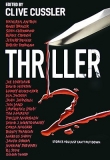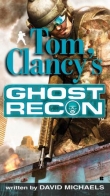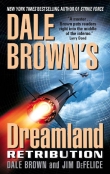
Текст книги "Ghost Fleet: A Novel of the Next World War"
Автор книги: P. Singer
Соавторы: August Cole
Жанр:
Триллеры
сообщить о нарушении
Текущая страница: 5 (всего у книги 37 страниц)
USS Coronado, Joint Base Pearl Harbor – Hickam, Hawaii
The coffee was just like that first cup his father had allowed him to sip from, back when he was seven. No sugar. No cream. It had tasted acrid, awful, not like the vanilla-flavored coffee his mom had loved. “When you’re in the Navy, you don’t have time onboard to add in all that junk,” his father had explained, typical of the kind of advice he gave his kids.
The boatswain’s mate in charge of brewing up the coffee on the USS Coronado was no barista either, and so the bridge crew all sipped his awful coffee, watching the harbor wake up around them. Stim tabs and the other pharm provided by the corpsmen worked better, but the Navy clung to its traditions. The bitter coffee was as much a part of the morning watch as the sunrise.
Simmons set down his mug and eyed the sunlight illuminating the Coronado’s deck. The LCS had just celebrated its tenth birthday, but Jamie still thought the sharp, triple-hulled trimaran design gave it the look of a futuristic starship, like out of a Star Wars movie. His dad loved that old stuff, so much so that he had taken Jamie and his sister, Mackenzie, to one of the reboot movies when they were way too young to understand it. Their mother had gotten so mad when she’d found out. It was still a good memory, though, Mackenzie coming home with the empty paper popcorn bucket, cherishing it in the way that little kids make souvenirs of the most mundane objects. That was one of the few happy memories from before his father left, before Mackenzie died.
Simmons walked over to a spot near one of the port windows to inspect a blemish no bigger than a quarter. He ran his finger over the epoxy patch. On the last anti-piracy patrol, a burst of machine-gun fire had gone right through the window and two spots below in the ship’s aluminum superstructure, now also repaired. No one had been hurt, fortunately, but it reminded the crew that the LCS had been designed for speed, not for heavy combat. Some of the crew had later wrapped Captain Riley’s chair in aluminum foil as “ballistic protection,” a joke that went over poorly with the captain.
As Simmons watched the morning sun paint the other warships in the crowded harbor orange, he savored the moment, knowing this was one of the last times he would command the bridge. He’d let Riley know what he’d decided when they arrived in San Diego.
Petty Officer Third Class Randall Jefferson, a young sailor on the bridge, approached, looking almost sheepish when he saw the XO lost in thought.
“Sir, I am sorry to disturb you, but you asked me to notify you if anything came up,” said Jefferson. “The sonar grid picked up movement. It just flashes in and out, right up near the ship. It’s probably some fish or a dolphin…”
“Don’t apologize for not letting your guard down in port. Deploy REMUS and let’s take a look.”
He gave the orders to lower what looked like a neon-yellow torpedo into the water. REMUS, the remote environmental monitoring unit, had actually started out in the commercial sector, much like its mother ship’s original design as a high-speed ferry. The unmanned underwater system, essentially a robotic miniature submarine, had been developed at the Woods Hole Oceanographic Institution in Massachusetts, mainly for civilian applications like port facility inspection, pollution monitoring, and underwater surveying. It was a mainstay of Discovery and Travel Channel sims. But what worked to capture Shark Week footage also worked for underwater guard duty.
Simmons entered the bridge and stood behind Jefferson, who was now operating the mini-sub with a first-generation Sony PlayStation – type controller. The handheld video-game-style controller was supposed to be intuitive for the sailors, but it felt more like a relic to a generation who now gamed in 3-D immersion. The vid from REMUS played out alongside a live overhead satellite feed of the ship’s position, a pattern analysis of surface and air traffic around their position, and a multicolor spherical chart that showed status reports of the crew and ship systems.
“Not picking anything up on thermal, sir,” said Jefferson. “Let’s see what visual has.”
“Give me the full screen,” said Simmons.
The camera pivoted and showed a gray mass of shadows on the screen. Simmons squinted, as if willing the murky water to reveal its secrets.
“Hello there,” said Jefferson. He zoomed the camera in on a dark form slowly circling under the ship’s stern. The camera began to focus.
There. No mistaking it. Against the dark blue background was the faint silhouette of a diver.
“Some damn fool local out messing around where he shouldn’t,” said Jefferson.
But then the diver stopped and raised his arms above his head as if praying beneath the LCS’s hull.
“He’s got something in his hands,” said Jefferson. The diver held what looked like a trash-can lid. He lazily kicked his feet and inched closer to the Coronado’s hull.
Simmons fought down the coffee climbing back up into his throat.
“Sound Force Protection alert! Possible terror attack, FP Condition Delta!” shouted Simmons. “And wake the captain. Tell him we have a diver placing what looks like a limpet mine on the hull.”
He picked up a headset and steadied his voice, knowing any fear in it would resonate throughout the ship.
“This is the XO. Force Protection security team to the port side. Cycle rudders and energize sonars. Set Material Condition Zebra,” Simmons said. “FP team, we have a diver attempting to place an explosive device on the hull. I want him off. Batteries release. Fire at will.”
Chaos broke out as sailors ran to the port side and tried to see where the diver was. Through the bridge’s open hatch, Simmons heard the shouts getting increasingly desperate.
“There he is.”
“No, he’s over there!”
“Get the hell out of my way!” yelled Petty Officer Anton Horowitz. He had been standing guard duty by the gangway on the starboard side, and he pushed his way through the scrum to the port side.
Horowitz leaned as far over the railing as he could and fired his M4 carbine methodically into the water, making a looping pattern of splashes from bow to stern. It was a strange thought to have in the middle of a terror attack, Horowitz knew, but this was actually fun. He had reenlisted only two months ago for just this kind of work, with a promise from the skipper that he’d be allowed to try out for the SEALs. He’d already submitted the required DNA and blood samples for SEAL selection and had been maxing his hypertrophy workouts.
Back on the bridge, Jefferson saw the ripples that Horowitz’s bullets made as tiny white lines on his screen that stopped after a few feet. When he switched to thermal view, they looked like a series of yellow needles jabbing into the water that quickly disappeared as their heat dissipated. Many were perilously close to the REMUS, but few were near the diver.
“Sir, they’re not getting him,” said Jefferson.
“Swing REMUS around and maneuver fifty meters away. Then I want you to bring it back full speed at us,” said Simmons.
“Sir?” asked Jefferson.
250 Meters Above Tokyo, Japan
They had said Tokyo was big, but up close it seemed to go on forever.
Major Alexei Denisov’s MiG-35 fighter-bomber was doing 875 kilometers per hour, just beneath the sound barrier, to avoid leaving a telltale sonic boom. And yet the dense buildings below seemed like they would never end. The plan seemed to be working, though. The threat-detection icon on the luminous screen at his right did not register anything urgent. He kept his finger on the toggle switch for the plane’s multifunction self-protection jammer, but so far the fighter had been unchallenged.
The reason was simple. The U.S.-Japanese combined air-defense network was designed for a threat from China, to the west. And east was where Denisov and his twenty-two other fighter-bombers had launched from the Admiral Kuznetsov. The Russian navy aircraft carrier was believed to be on exercises in the North Pacific, out of range of Chinese airstrikes. In fact, it had waited for a gap in satellite coverage and darted south at thirty knots for eight hours, moving just within the strike package’s range. The MiGs flew in fast and low, and, once they were over Japan, they popped up to mimic the flight paths that commuter jets took from Narita Airport.
Denisov’s MiG’s radar-warning receiver rumbled as signals from an early-warning radar near Narita washed over it, this time close enough to overcome the plane’s stealth features. Denisov’s radio picked up the frantic calls of the air traffic controller. He hit the button and a digital recording began to play. It sounded like gibberish to him, but the FSB officer back on the Kuznetsov had been clear about the need to play it at just this moment.
To the air traffic controller on the ground, it sounded like the pilot of one of Sony’s executive jets was having a heart attack.
As the MiGs passed Miyazaki and turned again toward the Ryukyu Islands, it was clear that the defenses were finally onto them. Denisov’s radar scope showed four Japan Air Self-Defense Force F-15s were vectoring as fast as they could, but they wouldn’t get there in time. The ruse had bought Denisov only a few minutes, but it should be enough.
After scanning the sky above him for any incoming fighters, Denisov said a quick prayer for his men and his country. For himself, there was no need. A commander could operate only with certainty, not fear. He expected losses today, but also success. His latest imagery of one of his targets showed just eleven U.S. aircraft parked inside their hardened hangars. Dozens remained out in the open, as usual.
The MiGs dove to low altitude and pushed forward to their full sea-level velocity of nearly fifteen hundred kilometers per hour, well over the speed of sound. The new MiG-35s were called fourth-generation-plus fighters by the Americans. They weren’t fully stealthy, but they had a significantly reduced radar signature. Each second counted now. When the jets neared Okinawa, Denisov’s radar-warning receiver lit with a pulsing red icon. The Patriot IV missile batteries that the Japanese had acquired from the Americans were tracking his low-flying fighter. They had him in their sights and could knock him down at will.
This was a crucial component of the plan. He took a deep breath and waited, telling himself that the missiles were threats only if someone pushed the launch button. Japan’s Air Self-Defense Forces, however, were not authorized to fire on targets without permission from that country’s civilian leadership. The gamble was that permission wouldn’t come in time. Two decades of near-daily airspace incursions by Chinese aircraft would have desensitized the Japanese, plus their communications networks were supposed to have been knocked offline by cyber-attacks. At least, that was the plan.
All the more reason not to miss on this first free run, Major Denisov had told his men during their preflight briefing. “You are about to fire the most important shots of your lives, and they may be your last. Make them count.”
There was no rallying call to glory over the flight’s communications. The only sounds on the radio this time were digital recordings of the voices of American F-22 Raptor pilots copied by a surveillance ship that had monitored the RIMPAC war games held each year off Hawaii. Anything to create uncertainty and delay the Japanese and American response by just a few more seconds.
The silent progress of an icon in his jet’s heads-up display told him he had arrived: Kadena Air Base. His war started here.
A flash of movement caught Denisov’s eye as four dark gray darts raced ahead of his squadron. It was a volley of Sokols (Falcons) fired by his second flight. A sort of miniaturized cruise missile, the electromagnetic weapon used pulses of directed energy to knock out air-defense and communications systems. Following a preprogrammed course, the flight of Falcon missiles separated, each leaving a swath of electronic dead zone behind it.
If his flight’s opening shots were silent, the next wave of destruction would be heard for miles. Denisov released four RBK-500 cluster bombs over the scores of unprotected U.S. Air Force planes parked near the base’s three-and-a-half-kilometer-long runway. As he banked his MiG, he caught a glimpse of an F-35A Lightning II being towed out of its hangar in a rush to confront him. His MiG was designed to be a match for the F-35, and the pilots of both had always wondered how the planes would actually stack up against each other. It would have to wait for some other time. The RBK canisters opened up behind Denisov’s plane, releasing hundreds of cluster bomblets, each the size of a beer can. Tiny parachutes deployed and the cans drifted toward the ground.
When proximity fuses detected that they were ten meters from the ground, the cans exploded, one after another. Hundreds of explosions ripped across the air base, blowing open scores of the U.S. Air Force’s most advanced fighters.
Denisov’s wingman made the next run and dropped three penetrating anti-runway bombs. The hardened tips of the massive bombs buried themselves almost five meters into the runway’s concrete and then detonated with more than fifteen hundred kilograms’ worth of explosives. While the limited number of American jets protected in hardened hangars might survive Denisov’s bombs, none would be taking off from the biggest U.S. air base in the Pacific for days, if not weeks.
Six kilometers away, the flight’s trailing two MiG-35s split past each other and then banked back hard as they raced toward the center of an imaginary X. That X was located in the middle of the largest U.S. Marine Corps base in Japan. The nine thousand Marines living there were supposed to have been moved to Guam five years earlier. But political wrangling between Congress and the Japanese government over just who would pay the $8.6 billion tab to relocate the Marines had delayed the transfer of forces. Time had run out.
The two planes passed each other at less than a hundred meters. At the imaginary point of their crossing lines, the MiGs dropped four KAB-1500S thermobaric bombs, each weighing just over thirteen hundred kilograms. The bombs opened to release a massive cloud of explosive vapor, which was then ignited by a separate charge. It was the largest explosion Japan had experienced since Nagasaki, and it left a similar mushroom cloud of smoke and dust hanging over the base as the jets flew away.
Denisov finally turned off the spoof audio recording and ordered his flight to report in. The strikes on the air bases, the ground bases, and even the U.S. Navy aircraft carrier harbored offshore had been a success. He’d lost only five jets to the late-reacting air defenses. Amazing.
He wasn’t sure the Americans would appreciate the irony of the Russians following the plan of attack the Americans had used on the Japanese some eighty years earlier, but Plan Doolittle had worked. Trying to conceal the relief in his voice, he ordered the remaining fighters to bank toward the Chinese coast.
That was the other part they’d copied from the raid the Americans had pulled back in the early months of their previous war in the Pacific: by coming in from an unexpected approach and making it a one-direction flight, they could strike at twice the range the enemy believed possible. The Russian navy had held up its end; now it had to trust that the Chinese aerial refueling tankers would be there as promised.
The raid wasn’t Denisov’s idea, but neither had the original raid back in World War II been Jimmy Doolittle’s idea. Maybe, he thought, history would call this one after its commander as well; Denisov’s Raid had a nice ring to it.
USS Coronado, Joint Base Pearl Harbor – Hickam, Hawaii
From the deck of the Coronado, Horowitz saw a sudden ripple in the water where the REMUS had turned, almost like what a fly fisherman would take for a fish rising. It made him pause, then he focused on firing at the threat. The shell casings bounced off the deck and into the water, sizzling as they floated for a brief moment and then sinking beneath the surface.
“REMUS is coming back around, sir,” said Jefferson on the bridge. “What now?”
“I want you to ram it up that diver’s ass,” said Simmons.
“Aye, aye, sir!”
Jefferson gently nudged the joystick to the right and then the left, centering the diver on the screen. Then he throttled it to full speed.
On deck, Horowitz’s M4 clicked; his magazine was empty. Without looking, Horowitz reached into the pouch attached to his belt for another magazine and tried to slam it into the rifle, but his last mag slipped from his hands into the water. Thirty rounds that could have made the difference were lost.
Horowitz cursed at the water as only a sailor could but stopped when he saw a fast-moving shape coming toward the ship. Great; not just terrorists but torpedoes now!
The underwater view was projected onto the REMUS control station. The diver was in the midst of attaching the mine to the hull when some sixth sense warned him what was coming. He turned his head to look over his shoulder. The last picture on Jefferson’s video screen was the diver’s surprised expression behind the goggles, just before the REMUS smashed into his left jaw and then plowed into the ship’s hull behind him.
On deck, Horowitz felt the crunch of the REMUS impact and then saw a roaring wall of white water flash up. And then silence.
Ruby Empress, Gatún Lake, Panama Canal
Arnel Reyes picked at a flake of black paint from the rail of the Ruby Empress, a Cyprus-flagged oil tanker.
“I like blue, you know, like the sky in the afternoon, and as a little boy, he will love it,” said his wife. Arnel wanted to say that neither a newborn baby nor a full-grown man could care less about wall colors. But it was best to humor her with all the love he could scrape up, especially given that he was standing on the deck of a ship in the Panama Canal and she was back home in Manila.
“Blue it is, my love. I’ll be back in two weeks and we can paint for him then,” he said. “We’ve got plenty of time, you know.”
“There’s not enough time with you gone. There’s just so much to do. And we haven’t even talked about his name,” Anna-Maria said over the phone. “Baby, I know your mother thought —”
Then the call dropped.
He worried Anna-Maria would think he’d hung up on her, but when he tried to reconnect, the call wouldn’t go through. He put his phone back in his pocket and leaned away from the hot deck rail. It didn’t help his mood that the transit through the Panama Canal was the slowest part of the trip, since ships had to wait in line to make their way through the canal locks.
As Reyes climbed back up the series of ladders, he heard the commotion on the Ruby’s bridge. Everything was squared away aboard the ship, but the radios were alive with traffic. Two ships ahead, the Xianghumen, a Chinese-flagged freighter, had turned on its engines. This was craziness. What was Xianghumen’s captain thinking, speeding up inside the transit zone? The canal master was screaming over the radio for the Xianghumen to acknowledge and stop. But there was no reply.
Reyes ran topside to see. It was like watching a slow-motion train wreck. The Xianghumen was moving at a mere four knots, slower than a jog. But with a hundred and twenty thousand tons of force behind it, the ship slowly ground its way into the canal locks, crushing the doors inward.
Reyes wasn’t sure how long it would take the Chinese companies that ran the Panama Canal Zone to fix this mess, but their investment had clearly gone down the tubes.
“Well, it’s not my hundred and eighty billion dollars,” said Reyes to one of the crew, who chuckled in reply.
In any case, the highway between the oceans was likely going to be closed for a while. He reached into his pocket. He’d better try to call his wife again.
USS Coronado, Joint Base Pearl Harbor – Hickam, Hawaii
When Horowitz came to, he was floating on his back in the water. A broken shard of yellow metal drifted a few feet away, and just beyond that was the diver’s body, floating face-down.
He looked up at the Coronado, trying to remember how he’d gotten here. His ears rang and his head ached worse than any shore-leave hangover. He saw the XO looking down at him from the bridge. He saluted the officer from the water, and the XO smiled and saluted back.
A launch pulled Horowitz and the black-clad body out of the water. The sailors hauled him aboard with smiles, but they handled the body with fear.
The launch stopped beside the Coronado and the diver was carried up to the helicopter deck at the stern. Horowitz scrambled up after it and joined the small crowd that had quickly gathered around the body. They all spoke quietly around the dead diver, as if worried their voices might revive him.
“Don’t shove me,” said a sailor. “I gotta viz this.”
“You can’t do that,” whispered another. “He’s dead. You know the rules.”
“XO’s coming,” a voice hissed, and the crowd tensed and drew back into order, parting to allow Simmons through.
“Nothing like a morning swim, Horowitz,” Simmons observed with a smile. “You solid?”
“Aye, sir,” Horowitz replied. “Can’t say the same for my swim buddy here.”
A sailor pulled off the diver’s mask to reveal bulging eyes. Horowitz felt his stomach turn. The left side of the man’s jaw was bloody and caved in, but the rest of the dead man’s features were still intact. With his cropped blond hair, he looked almost like a sleeping Viking.
“We get the right guy?” asked one of the sailors. “He don’t look like any jihadi I’ve seen before.”
Someone handed Simmons the broken dive mask. He turned it over in his hands, careful not to cut himself on the shards of plastic, and then knelt down to look closer at the body. A delicate scar on the chin and a nose that looked as though it had been broken as regularly as a boxer’s.
“Roll him over,” said Simmons.
As they turned the man, Horowitz noticed that the diver’s suit wasn’t neoprene; it was made of something thicker. Then he saw the man wasn’t wearing conventional scuba gear.
“Sir, that’s a closed rebreather unit,” said Horowitz. “SEALs use them to swim without the bubbles. The wetsuit’s got some thermal masking going on too.”
Simmons nodded and studied the gear being stripped off the body. The dive computers strapped to the dead man’s wrists looked sleek, clearly mil-grade. They also had Chinese markings on a protective cover.
The men looked confused as the XO sprinted back to the bridge without a word.
It wasn’t a big ship, and Simmons was at the bridge within twenty-five seconds. Riley was there now, still in his skivvies but wearing his blue USS Coronado baseball cap with the CO’s scrambled-eggs insignia sewn in gold thread above the brim. Jefferson was playing the REMUS video back for him. Riley turned to see Simmons burst into the room. Simmons didn’t walk around the projected screen but went right through it, rippling the picture.
“Got him?” said Riley.
Simmons seemed to ignore him and looked right at the communications officer.
“Get PACOM on the horn, now! Prep an OPREP-Three Pinnacle message.” Any message with Pinnacle in the identification line was automatically flagged of interest not just to the entire Navy chain of command but also to the National Military Command Center, which monitored events for the Joint Chiefs and the president.
“That’s a little extreme for one diver, XO. Let’s notify the duty sonar ship first and see if they have any further info,” said Riley.
“Too slow. We need to send a Pinnacle out now, sir,” said Simmons.
The communications tech looked from Simmons to Riley. “Sirs, nothing’s working here. I can’t even get my own phone to hook on to the network. It’s like the whole spectrum is down.”
On the main deck below, Horowitz rubbed the ache at the base of his neck. He angrily slammed another magazine he’d cadged from a fellow sailor into his M4. They’d found his weapon still lying on the deck. He absent-mindedly ran his tongue across his lips, realizing he was thirsty despite being soaking wet. He’d read that this was what happened when you went into shock, but he wasn’t going to say anything about it now. Falling off the ship and then bitching about being scared seemed like a good way to blow his shot at becoming a SEAL.
Horowitz looked around the harbor at the wall of U.S. Navy steel assembled there. He couldn’t wait to get to sea and wreak some revenge on whoever had done it.
Then the USS Abraham Lincoln, a nuclear-powered aircraft carrier tied up just across the harbor, seemed to lift a few feet from the water, as if the hundred-thousand-ton ship were being conjured skyward. The shove of the blast wave pushed him back to the bulkhead.
As he scrambled to his feet, Horowitz stared, agape, as the Nimitz-class carrier settled back into the water with orange flames and black smoke pouring from its deck. He watched as the carrier’s hull begin to break apart about two-thirds of the way down from the bow.
“Oh, shit. The reactors,” muttered Horowitz.

![Книга [Magazine 1966-07] - The Ghost Riders Affair автора Harry Whittington](http://itexts.net/files/books/110/oblozhka-knigi-magazine-1966-07-the-ghost-riders-affair-199012.jpg)






